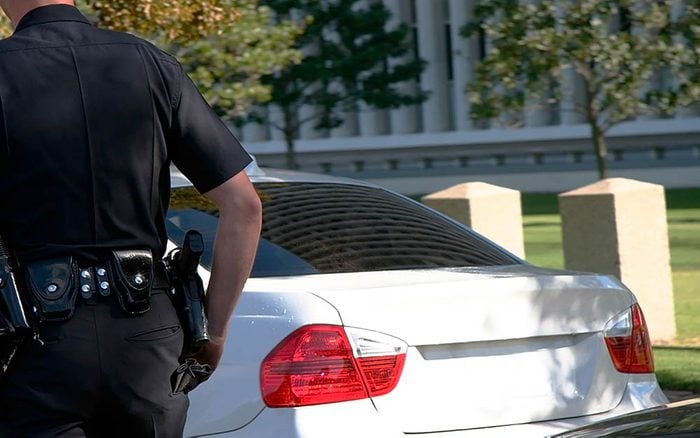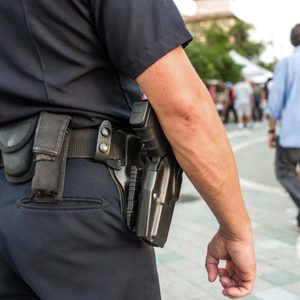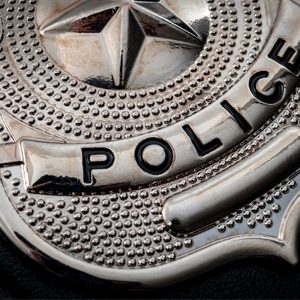This Is Why Cops Touch Your Car’s Tail Light During Traffic Stops
Updated: Apr. 18, 2024

Nope, it's not because they're trying to buff out that scratch above your bumper.
Say you’re driving on your local road, and you enter a construction zone. The construction is wrapping up for the day, the sun is coming down, and you just miss the “Reduce Speed Ahead” sign. You come to the Stop sign and notice a state trooper pulled up behind you. The trooper’s flashers turn on, and you realize that you may have been speeding. Better brush up on the 10 tricks to beat any speeding ticket!
You pull over, and as the officer approaches the car, you hear a quick tap on the back of your car. The officer touches your tail light as he came to your window, and you come to realize that you’ve seen this before. Actually, you’ve seen this quite a bit. Police officers will often briefly tap your car’s tail light before approaching the window.
This common cop practice isn’t rooted in superstition, and it isn’t a secret. As it turns out, it’s based in the officer’s well-being.
According to criminal defense attorney and DWI/DUI lawyer Joe Hoelscher, this routine maneuver serves as a sort of bread crumb left to prove that the police officer had approached that particular vehicle. “Leaving a thumbprint on the brake light is an old-school way to tag a car with a fingerprint, so it can be identified conclusively as the vehicle involved in a stop should the officer become incapacitated,” explains Hoelscher. Basically, if the officer’s safety were to be jeopardized by the driver, or if the car fled, investigators could track that fingerprint to the suspect in question. Who knew?! Plus, find out more explanations for little things you’ve always wondered about.
Why is it “old-school”? Before dash cams and body cams, the fingerprints left on the tail light served as a primary form of evidence about the traffic stop. But, despite all of that new technology, you probably will still see cops do this. “It is less important now that video is ubiquitous, but it requires so little effort that officers are still trained to do it,” Hoelscher explains.
Another theory suggests that the tap can serve as a means of jarring an intoxicated driver or a driver in possession of illegal materials. But Hoelscher claims that this isn’t true. On the contrary, “officers should do it subtly so the driver doesn’t realize it’s there,” he says. “Otherwise, a perpetrator could remove the print.”
Hoelscher even suggests a way to use this common cop behavior to your advantage. He notes that when a car’s tail lights are dusty, the cop’s fingerprint can stand out. If this is the case for your car, “the next officer might be more aggressive realizing you’ve had another law enforcement interaction recently.” So, he says, “my advice is to wash your car after getting a ticket or the next time you get stopped.” And there are more tips where that came from with these 45 secrets police officers want you to know.


